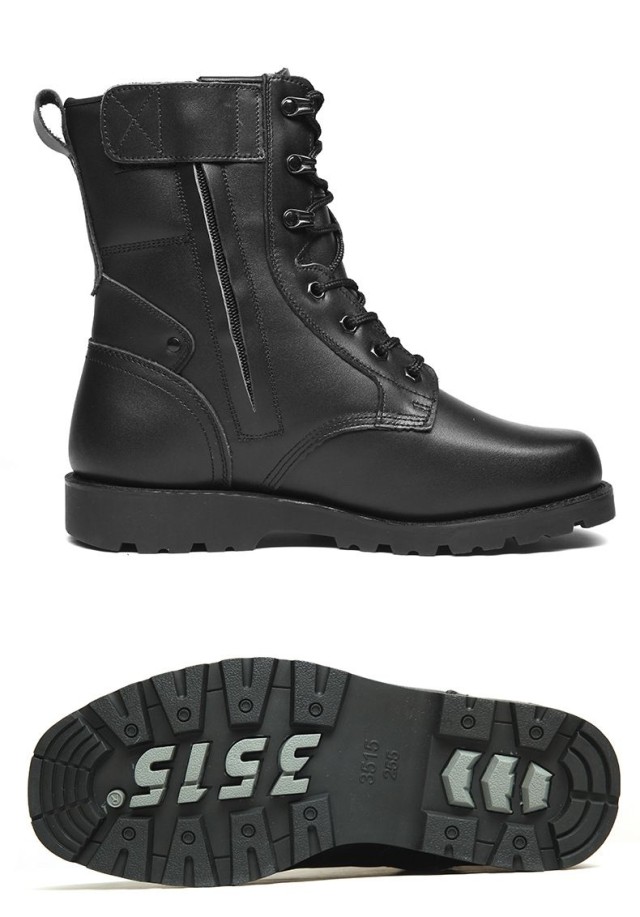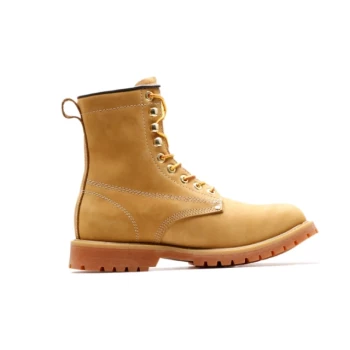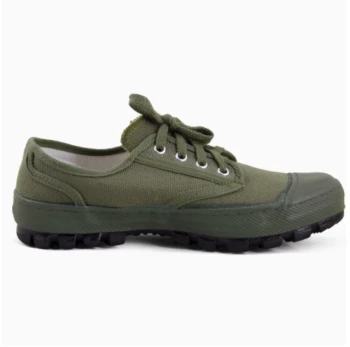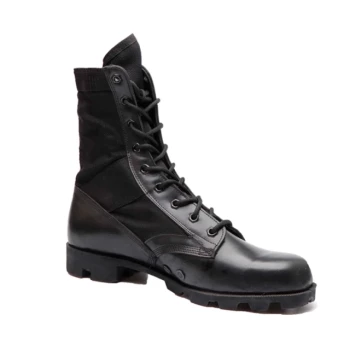For footwear buyers prioritizing longevity and cost-efficiency, Goodyear welt construction remains the gold standard. This method’s triple-layer stitching, moisture-resistant design, and repairability outperform cemented soles and Blake stitching—translating to decades of wear with proper maintenance. Below, we dissect its engineering advantages and real-world performance.
The Anatomy of Goodyear Welt Construction
How Welt Stitching Creates a Structural Triad
Goodyear welts use a leather strip (welt) sewn to the shoe’s upper, insole rib, and outsole via a zigzag stitch. This forms a protective buffer zone that:
- Distributes impact forces across three layers instead of concentrating stress on direct sole attachments
- Prevents water seepage into the insole by creating a labyrinth-like barrier
- Enables clean sole replacements since the welt remains intact during resoling
Research shows this triad structure makes Goodyear-welted shoes 2–3 times more resistant to sole separation than Blake-stitched alternatives.
The Role of the Insole Rib in Load Distribution
A stiff leather or fiberboard rib glued to the insole serves as the stitching anchor. This rib:
- Reinforces arch support by maintaining midfoot rigidity
- Absorbs heel-strike shocks through its tension-resistant design
- Holds the cork filler that molds to the wearer’s foot over time
Unlike cemented constructions where soles detach under lateral pressure, the rib-welt bond preserves structural integrity even during heavy use.
Durability in Action: Use Cases and Longevity
Work Boots vs. Casual Footwear: Stress Test Comparisons
In industrial settings, Goodyear-welted work boots consistently outlast competitors:
| Scenario | Cemented Sole Lifespan | Goodyear Welt Lifespan |
|---|---|---|
| Warehouse shifts | 8–12 months | 3–5 years* |
| Construction work | 6–10 months | 2–4 years* |
*With annual sole replacements
The layered construction withstands abrasion from ladders, debris, and prolonged standing—failures common in cheaper boots.
How Repairability Extends Shoe Lifespan
A $100–$400 resoling every 2–3 years preserves the upper leather, which can last 10–15 years with care. Benefits include:
- Retaining custom foot molds from the cork bed
- Avoiding "new shoe" discomfort from rebreaking-in
- Reducing waste by replacing only worn soles
For dress shoes, this cuts long-term costs by 60% compared to replacing cemented pairs annually.
Why Alternatives Fall Short
Blake Stitching Limitations in Moisture Resistance
While sleeker, Blake stitching’s direct sole-upper attachment:
- Lacks waterproofing layers, allowing moisture to reach the insole faster
- Requires specialized cobblers for resoling due to internal stitching
- Wears out faster under heavy loads without welt reinforcement
Cemented Soles and Planned Obsolescence
Glued constructions dominate budget footwear but:
- Delaminate within months of exposure to heat/moisture
- Cannot be resoled—forcing full replacements
- Lose shape as adhesives degrade over time
Upgrade Your Inventory with Future-Proof Footwear
3515 equips distributors and brands with Goodyear-welted footwear designed for decades of service. Our manufacturing expertise ensures every pair delivers the durability your customers demand—contact us to explore bulk solutions.
Related Products
- Wholesale Durable Camo Canvas Shoes with High-Traction Rubber Soles
- Safety Footwear Wholesale Manufacturer for Custom OEM/ODM Production
- Wholesale Safety Footwear Manufacturer for Bulk & Custom OEM Orders
- Athletic Safety Shoes with Dial Closure & Steel Toe for Wholesale & Custom Manufacturing
- Wholesale Anti-Smash & Puncture-Proof Safety Shoes Custom Manufacturing for Brands
Related Articles
- How Tactical Footwear Innovations Are Redefining Safety and Performance
- How Vulcanized Rubber Boots Outperform Standard Footwear: Science and Practical Benefits
- How Tactical Footwear Shields Delivery Workers from Job-Specific Injuries
- How Tactical Footwear Camouflage Works: Science, Adaptation, and Mission Success
- How Tactical Footwear Combines Certified Safety and Ergonomic Design for Transport Workers


















